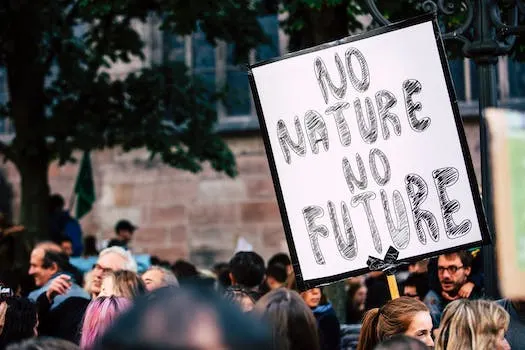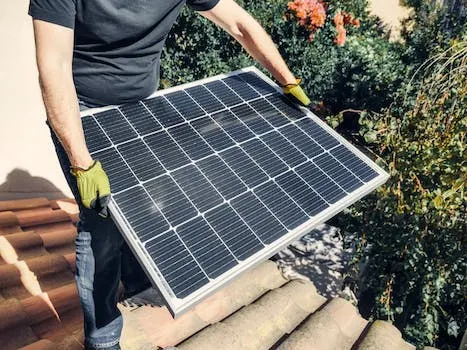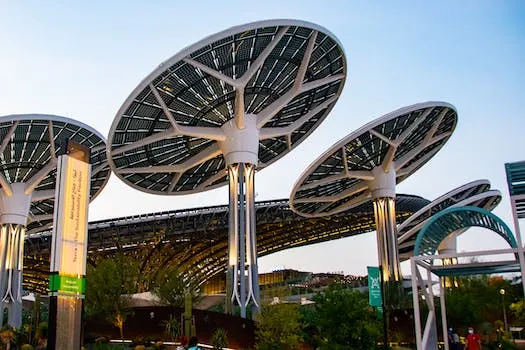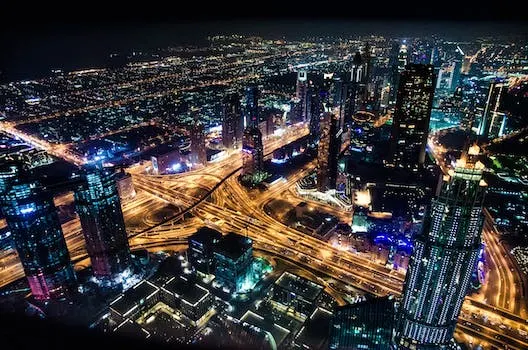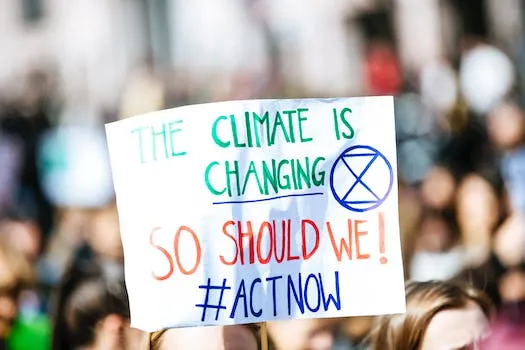
How Inflation is Affecting Climate Change
Inflation has a direct and profound effect on climate change. As prices of resources and energy increase, so too does the amount of carbon dioxide emitted into the atmosphere. This is because when prices rise, businesses and individuals are more likely to purchase more expensive products that require more energy to produce and use. Additionally, businesses may switch to cheaper sources of energy such as coal or oil which further increases the amount of carbon dioxide released into the atmosphere. To better understand how inflation is affecting climate change, it is important to consider sources of greenhouse gas emissions including electricity production, transportation, industry, agriculture and forestry.
Climate Action Fast Facts provide regularly updated facts and findings on climate change's links to the economy, social issues, nature and more. Climate change has direct impacts on food systems as well as food security; through mitigation efforts there may be increased competition for resources in order to reduce emissions. Carbon pricing is one tool used by many countries around the world in order to reduce carbon emissions; this method allows for flexibility while also being cost-effective for society overall. Placing an adequate price on GHG emissions can help incentivize businesses towards cleaner practices while also providing revenue that can be used towards other environmental goals such as renewable energy projects or reforestation initiatives. In conclusion, inflation has a significant impact on climate change due its influence over resource prices which affects how much carbon dioxide is released into our atmosphere; however with proper policy implementation we can mitigate these effects while still achieving our environmental goals in an efficient manner.
The Impact of Inflation on Climate Change
Inflation has a direct impact on climate change. When inflation rises, the cost of goods and services also increases, meaning businesses and individuals are more likely to purchase more expensive products that require more energy to produce and use. This can lead to an increase in the amount of carbon dioxide released into the atmosphere as businesses switch to sources such as coal and oil for energy. Additionally, individuals may be less likely to purchase energy-efficient appliances or transportation options due to their increased cost. The Consumer Price Index (CPI) is a well-known indicator of inflation which measures how much prices have risen over time, eroding purchasing power for both consumers and businesses alike. For example, in 1980 a movie ticket cost $2.50 but by 2020 it had risen to $9.45 - an increase of 277%. This means that consumers are paying $445 more per month than they did a year ago just for the same goods and services they purchased before inflation took effect. Inflation can also occur when production costs such as raw materials or wages rise due to an increase in demand for products or services - further increasing prices across the economy and leading to even higher levels of carbon dioxide emissions into our atmosphere from both businesses and individuals alike.
How to Mitigate the Impact of Inflation on Climate Change
Governments can take several measures to mitigate the impact of inflation on climate change. One way is to introduce tax incentives for businesses and individuals who invest in energy-efficient technologies. This will encourage people to invest in energy-saving solutions, which can reduce the amount of energy used and therefore, the amount of carbon dioxide released into the atmosphere. Additionally, governments can introduce regulations that require businesses and individuals to use renewable energy sources such as solar and wind power. This will reduce their reliance on fossil fuels, which are a major source of carbon dioxide emissions. Finally, governments can also impose regulations that require businesses and individuals to reduce their energy consumption by introducing efficiency standards or imposing penalties on those who use too much energy.
The Inflation Reduction Act offers financial incentives in the form of consumer rebates and tax credits that could help Americans curb their own climate-warming emissions more affordably. The bill includes a number of tax credits aimed at making clean energy options more accessible for consumers, such as solar panels or wind turbines. According to a new analysis, these clean energy tax credits could double U.S deployment of wind and solar power by 2030 if implemented properly - an important step towards reducing global warming caused by inflationary pressures on our economy.
In addition to these financial incentives from government policy makers, there are other steps we can take as citizens to mitigate the effects of inflation on climate change ourselves: investing in efficient appliances; using public transportation instead of driving; switching off lights when not needed; buying locally produced goods; recycling materials whenever possible; using renewable sources like solar or wind power for electricity generation; planting trees around our homes or communities - all these small actions add up over time! By taking responsibility for our own actions we can make sure that we do not contribute further towards global warming caused by inflationary pressures on our economy
Conclusion
In conclusion, inflation has a direct and significant impact on climate change. As the prices of resources and energy increase, so too does the amount of carbon dioxide emitted into the atmosphere. To mitigate this effect, governments must introduce policies that incentivize businesses and individuals to invest in energy-efficient technologies, use renewable energy sources, and reduce their overall energy consumption. carbon pricing is one of the most effective tools for reducing emissions by increasing the cost of goods and services that produce CO2. Additionally, policy makers must take into account feedbacks from environmental pressures and resource scarcity when formulating economic policies to ensure they are effective in mitigating climate change impacts. By taking these measures we can reduce our carbon footprint while also protecting our economy from potential macroeconomic consequences associated with climate change mitigation policies such as GHG taxes.




